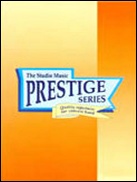Results
-
 £124.95
£124.95COUNTDOWN (To Eternity?) (Prestige Concert Band Set) - Short, Michael
Score and Parts. Phase 1 (Mystery) - the fascination of nuclear power; the strangeness of its invisible radiation and enormous unleashed energy which may be beneficial to the human race, but which can also cause violence of colossal magnitude. Phase 2 (Imaginations) - Anxiety begins and nervous doubts increase as thoughts intrude of what might happen if things went wrong: warfare, mechanical failure, uncontrolled fission, explosion, melt-down, firestorms, fallout, burns, contamination, disease, mutation, the desolation of a nuclear winter. Phase 3 (Reality) - Time is ticking on. We accept the benefits of nuclear power, tinged with unease and incomprehension. The piece ends with doubt and uncertainty - only time will tell if we are right or wrong. Performance time 16'56" (Recorded on QPRM115D GREAT BRITISH MUSIC FOR WIND BAND, Western Band of the Royal Air Force)
Estimated dispatch 7-14 working days
-
 £204.99
£204.99Credentium Wind Band Set (Score & Parts)
A spectacular dive via an extended chromatic scale immediately submerges us in a charged and somewhat archaic-feeling atmosphere. Trumpets, horns and trombones resound in rhythmic patterns, buttressed by restless motifs in the percussion. A second theme, in the woodwinds, begins much calmer but is quickly pushed aside by that same brass offensive. This introduction is the musical expression of the sometimes tumultuous early history of the town of Peer in Belgium. It closes with a D scale played over two octaves and repeated three times, symbolizing the church steeples that dominate the townscape. Peer has the credentials of a town, and people should know about it.There follows a rhythmic, turbulent passage: in the course of history, Peer has not been spared the ravages of war, arson, occupation, epidemic and other evils. In contrast, a slow, pastoral, lyrical part expresses the periods of peace and prosperity the town has known, as well as the serene geographic setting that still characterizes the place. Various instruments in groups are developed in solo style while the accompaniment displays vast, painterly images of sound. Now and then an exotic intonation is heard: a variety of peoples and cultures have left their mark on the town.This episode of tranquility and peacefulness comes to a sudden end when, via a surprising, almost chaotic transitional passage, we are in effect transported back to our own time. A hopeful, festive march expresses the confidence in the future that the Royal Concert Band of Peer exudes. This confidence is wholly justified: under the direction of conductor Willy Fransen, the 95 members of the concert band have experienced an extended period of good fortune, and the 75 musicians of the youth band - and the 45 little musicians of the mini-band - are involved in thriving operations. 0:13:15
Estimated dispatch 7-14 working days
-
 £89.10
£89.10Goddess of Fire
A magnificent programmatic work for symphonic band that is an offering to Pele, the Goddess of Hawaii's volcanoes. The work opens with primordial, mysterious sounds representing the foreboding volcanoes of Hawaii. We are then introduced to Pele as a tall, beautiful young woman. This is one of the forms she can take and it represents her powers of creation and beauty. This gives way to the active and destructive Pele, often taking the form of an old woman, wrinkled and bent with age. The following lyrical section of the piece is the full statement of Pele's theme of creation and beauty. As this theme settles, we begin to hear the ground pop and crack letting us know that new lava is beginning to bubble and flow. Suddenly and violently, one of her volcanoes erupts, creating massive chaos and destruction. After the eruption subsides, Pele's theme of creation and beauty returns again. A wonderful addition to any concert or festival performance by mature bands. Exceptional in every respect!
Estimated dispatch 7-14 working days
-
 £72.99
£72.99Wind Power - Robert Buckley
In this impressive piece, the title Wind Power can refer either to the various machines that are driven by the wind, or the soaring sound of a wind band. In a cinematic style, this work opens powerfully with a series of tone clusters followed by a constantly moving series of notes depicting the ebb and flow of the wind. Then we are soaring high above the ground in a glider with only the sound of the wind keeping us aloft. With dramatic shifts in dynamics along with pulsing rhythms, this piece is a fun challenge for all members of the ensemble. Dur: ca. 5:00
Estimated dispatch 7-14 working days
-
 £137.99
£137.99Queen Symphonic Highlights
The British rock band Queen, formed in 1970, are one of the most popular bands of all time. The music of Queen already exists in numerous instrumental arrangements at all kinds of levels. However, arranger Philip Sparke has taken a unique approach: he has created an exceptional medley in a challenging, symphonic style from four of their greatest hits: 'Bohemian Rhapsody', 'Bicycle Race', 'Who Wants to Live Forever' and 'We Are the Champions'.
Estimated dispatch 7-14 working days
-
 £60.99
£60.99The Willow Tree - Pádraigín Ní Uallacháin
Although this haunting tune has the flavor and sentiment of a traditional Irish folk song, it was composed in 1995 by multifaceted artist Pdraign N Uallachin. Her inspiration for the song was the idea that when we are happy or sad, the elements and the natural world are aligned with our feelings. From the wistful lyrics of the song; Down by the river there's a tall willow tree, who weeps all night for you and me. This evocative setting for band follows this sentiment through peaks and valleys of sound and emotion. Dur: 3:10
Estimated dispatch 7-14 working days
-
£50.50
Six Tone Builders, Set 2
After the enormous success of his first set of tone builders, we are pleased to include a second set of short arrangements and chorales. These are perfect to work on band balance and intonation, and Lloyd Conley has included slight chromaticism to help bands solve many different types of intonation problems. This is an ideal resource for all elementary and middle school directors looking to develop the sound of their ensemble.
Estimated dispatch 7-14 working days
-
 £98.99
£98.99Fractures in Time - Tyler Arcari
Looking at the world you start to notice not everything is modern. In fact, you can see bits and pieces of tech, objects, tools, structures that are from a time long past...peppered around our daily lives. These fractures in time remind us that we are not always completely modern. This sentiment is on full musical display in this unique and fresh offering from composer Tyler Arcari.
Estimated dispatch 7-14 working days
-
 £122.50
£122.50Symphonic Rock
Gilbert Tinner combined a number of hits by the well-known British rock group Queen - and a song by Genesis, also a rock formation from England - to form an exciting arrangement with the telling title Symphonic Rock. The instrumentation can indeed be called symphonic, but important instruments from pop music are also present. For instance, an important role is played by the electric guitar, and a synthesizer is used as well. The medley respectively features: Innuendo, A Kind of Magic, Another One Bites the Dust, Radio Gaga, That's All and We Are the Champions.
Estimated dispatch 7-14 working days
-
 £169.99
£169.99Atropos - Kevin Houben
Atropos is one of the three goddesses of fate. She cuts the thread of life of a person whenever their time has come. The composition is film-like and presents challenges in sound, balance and rhythm. The work opens in a quiet mood in which the themesare presented before finally all the elements are combined and we are led to a sparkling apotheosis that is demanding in its melodic phrasing and requires stamina from the musicians.
Estimated dispatch 7-14 working days
